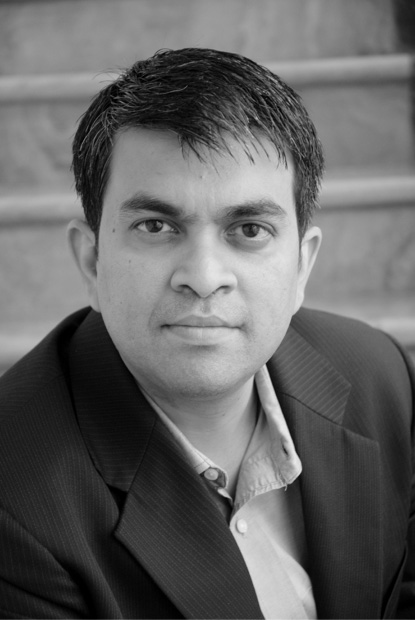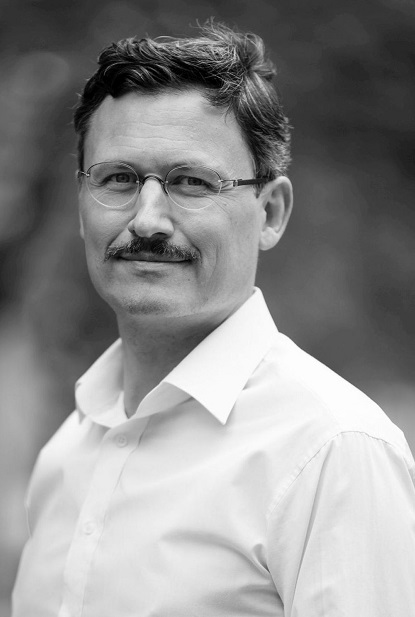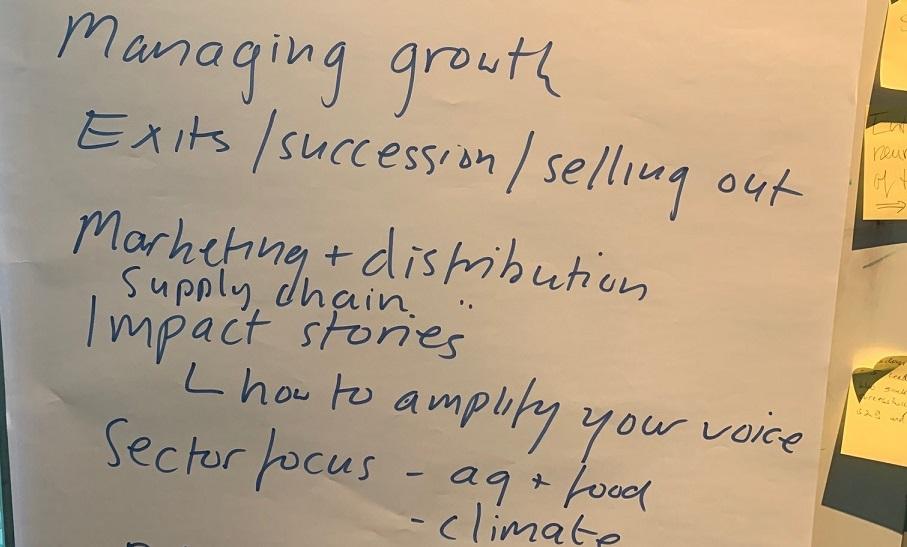Voices of the Editorial Committee
Every two months CLUED-iN has been developed with a high-level editorial committee of inclusive business thought leaders from a wide range of fields – including the private sector, donor organizations, and academia. For each issue, committee members provided input and advice and wrote editorials expressing their views and demonstrating their expertise. In this final issue of CLUED-iN, we asked EC members to share their views about important issues and trends in Inclusive Business and to provide words of advice for entrepreneurs.
Stuart L. Hart, Stephen Grossman Endowed Chair in Sustainable Business, University of Vermont
- Read Stuart's insights
-
What are the most important issues/trends in inclusive business you foresee over the next few years?*
At the dawn of the 21st century, the prospect of harnessing the power of business to address the needs of the world’s poor was a tantalizing, if counterintuitive, prospect. In fact, when C.K. Prahalad and I first drafted what would become “The Fortune at the Bottom of the Pyramid” in the late 1990s, the vast majority of the world’s population (roughly 4 of the 6 billion people alive in the world at the time) earned less than $4 per day per capita. The Fall of Communism a decade earlier had failed to produce the wave of middle-class consumers in developing countries and emerging markets that the world’s multinational corporations clamored for. Poverty was still seen almost exclusively as the domain of aid organizations, governments, and philanthropists.
The argument that the poor presented a “prodigious opportunity for the world’s wealthiest companies” attracted the attention of many in the corporate senior executive ranks, even as it was clear that “serving the poor” would require radical innovations in both technology and business models. Indeed, the prospect of lifting hundreds of millions out of poverty while simultaneously driving growth and financial performance was sufficient to persuade many business leaders to take the plunge.
In the years that followed, the base of the pyramid (BoP) challenge sparked a flurry of corporate initiatives and experiments aimed at serving the poor profitably. In the process, these large corporations were also awakened to the rich ecosystem of ventures, NGOs, and multilateral agencies already engaged in the space. New terminology emerged to describe the many forms of emerging BoP innovation: inclusive business, hybrid value chains, social enterprise, sustainable livelihoods, opportunities for the majority, and pro-poor business, to name just a few.
Around the turn of the last century, world leaders also came together to adopt the United Nations Millennium Declaration, committing their nations to a new global partnership and setting forth eight Millennium Development Goals (MDGs) focused on extreme poverty, education, gender equality, child mortality, material health, disease, environment, and global collaboration. Led by Professor Jeffrey Sachs at Columbia University’s Earth Institute, the MDGs were headlined by the seemingly audacious goal (MDG #1) of halving by 2015 the proportion of people in the world living in extreme poverty in 1990 (defined as per capita income of less than $1.25 per day)—consisting at the time of nearly 2 billion people.
A surge in MDG-driven development aid focusing on extreme poverty, growing private sector engagement, and, most importantly, a burgeoning Chinese economy combined to reduce the number of people living in extreme poverty from nearly 2 billion in 1990 to less than 1 billion in 2015, enabling the UN to report triumphantly that MDG #1 had been achieved. This dramatic reduction in extreme poverty was accompanied by an unprecedented expansion of the global middle class, defined as those earning between $10 and $100 per day per capita.
If this trend continues to 2030, the global middle class will expand to more than 5 billion, along with a continuing reduction in extreme poverty and an overall decline in the numbers of people at the “base of the pyramid”—those earning less than $10 per day per capita. In the space of three decades, world income distribution would thus be fundamentally transformed from a pyramid, with the bulk of humanity at the base, to a diamond, with a burgeoning global middle class and shrinking base.
Consequently, the inclusive business challenge now has three distinct faces: 1. Eradicating rural poverty at the bottom of the diamond; 2. Lifting the disaffected at the top of the diamond who have been left behind by globalization and technology; and 3. Confronting the challenge of an enormous emerging middle class at the middle of the diamond.
Ending Rural Poverty
Addressing the declining prospects of those in the “legacy” base—the billions of smallholder farmers still residing in the rural villages of the world—is key to averting an environmental train wreck. To stem the flow of migrants from the farm to the city, and foster sustainable agricultural communities, we must expand successful policies and aid programs for rural development as well as private sector investment in regenerative agriculture and inclusive business. The first business challenge, then is:
1. Ending Rural Poverty: How can we best enable a truly sustainable and regenerative form of rural/agricultural development at the Bottom, one that simultaneously raises incomes, slows urban migration, and averts environmental meltdown?
Reviving the Rustbelt
Should the discontent of those left behind at the top continue to fester, additional deficit spending may be required to address their plight—to rebuild the crumbling infrastructure built during the post-war years and redress the wage stagnation of the past three plus decades. Such deficits could spell doom for the foreign investment, development assistance and international collaboration needed from developed countries (particularly the US) to finally vanquish extreme poverty at the bottom. We already see this tension regarding the continued financial and military support of the Ukrainians by the US and Europe, against the Russian invasion in 2022. Right wing parties threaten to cut off such support in favor of “country-first” nationalist priorities. Such a retrenchment, in the face of the lingering effects of the Coronavirus pandemic, could cause extreme poverty to persist or even grow in the years ahead, further fueling the unprecedented flow of the poor from farm to city in search of opportunity. The second business challenge, then, is:
2. Reviving the Rustbelt: How can we best create a truly inclusive economy at the “declining” Top, one that lifts those left behind, overcomes racial bias, and is based on next-generation, clean and regenerative technology?
Transforming the Aspiring Urban Middle
While poverty is still a serious concern in the swelling slums and shantytowns of the world, growing numbers of rural migrants and slum dwellers are succeeding at lifting themselves out of extreme poverty. Once extreme poverty—the struggle for day-to-day survival—has been overcome, people confront new poverty challenges that are more psychological and social in nature: how to define and pursue a better life. Issues of perceived well-being, social comparison, and status envy become significant, and “poverty” becomes more relative than absolute. As incomes—and aspirations—rise in the emerging, urban economies at the middle of the diamond, it is the former rather than the latter form of poverty that takes center stage. The third business challenge, then is:
3. Transforming the Aspiring Urban Middle: How can we best fulfill the needs and wants of the underserved and rising middle class in the urbanizing Middle without overwhelming the planet’s regenerative capacity and eclipsing planetary boundaries?
*This piece is excepted from my new book, Forging a Sustainable Capitalism, to be published by Stanford Business Books in 2023.
What advice do you have for IB entrepreneurs going forward?
Together, these three challenges require wholesale transformation over the next decade—by governments, civil society organizations and businesses everywhere—to create the possibility for a sustainable future. For business and inclusive business entrepreneurs, this transformation means focusing on sustainability-driven purpose, inclusion-driven strategy, and a commitment to larger system change. The three sustainability challenges outlined here hopefully provide companies and inclusive business entrepreneurs with potential “North Stars” to help focus their quests for purpose and provide fertile ground for prioritizing strategy and investment in the years ahead.
Why do you think inclusivebusiness.net matters for IB entrepreneurs?Inclusivebusiness.net provides a “one-stop-shop” for IB entrepreneurs, including the content, tools, case studies, and shared experiences needed to increase the likelihood of success. I highly recommend it.

"The inclusive business challenge now has three distinct faces: 1. Eradicating rural poverty at the bottom of the diamond; 2. Lifting the disaffected at the top of the diamond who have been left behind by globalization and technology; and 3. Confronting the challenge of an enormous emerging middle class at the middle of the diamond."
Royston Braganza, CEO, Grameen Capital India
- Read Royston's insights
-
What are the most important issues/trends in inclusive business you foresee over the next few years?
Being an eternal optimist I see tremendous opportunities even in the dark clouds around us. Indeed, the world has been buffeted by one storm after the other – the aftermath of the COVID pandemic, the dark war clouds over the Ukraine, the gloomy economic outlook and recession coupled with the food and fuel crisis – all these are huge concerns. And yet, in those very challenges there are opportunities – for inclusive businesses to innovate in areas of the SDGs (Sustainable Development Goals), in the areas of clean energy and agri supply chains. We at Grameen Impact have globally pioneered the SDG Impact Bonds (already done 10 of them, including one on Goal#2 Sustainable Agriculture & Food Security) and are currently working on an SDG#7 Clean Energy Impact Bond. These goals are seeing a lot of momentum and financing – along with tremendous political will globally – which will certainly continue into the foreseeable future. Entrepreneurs will do well to align their businesses to the SDGs.
What advice do you have for IB entrepreneurs going forward?3 Ps – Passion, Patience and Perseverance. There is a roller-coaster ride up ahead; actually we’re already on one wherever you are in the global economy. But stay focused, stay committed … keep measuring your impact. Hang in there!
Why do you think inclusivebusiness.net matters for IB entrepreneurs?No one is an island. Though it does feel like it in these troubled times – especially if one is a small business. One could feel isolated, helpless, confused. Here’s where being a part of a community, an ecosystem, really helps. Inclusivebusiness.net provides the ecosystem – connecting inclusive businesses with ideas, finances, trends.. and even other inclusive businesses. It certainly helps... tremendously.

"Being an eternal optimist I see tremendous opportunities even in the dark clouds around us."
Markus Dietrich, Director Policy, Inclusive Business Action Network
- Read Markus' insights
-
What are the most important issues/trends in inclusive business you foresee over the next few years?
To foresee trends it can be useful to look back in time. iBAN did this recently with a study on inclusive business in the Philippines, checking up on the companies that were identified as IB ten years ago. We found that the past decade saw a tremendous expansion of the IB models in terms of reach and depth of impact. The companies increased their reach by 859 percent, engaging now with over 36 million people at the BoP, up from about four million people in 2012, mainly driven by the microinsurance sector, where the IB model has led to systemic change. The companies also increased income generation opportunities, socio-economic empowerment, and access to products and services. For example, income increased on average by 189 percent for the poor and low-income people engaged with those companies. So, the pioneering companies are doing good and have shown a remarkable resilience throughout these challenging times.
Finally, we have evidence that IB works and is scaling in terms of social impact and economic growth over time.
The second positive trend is the growing and accelerating support from governments globally to support IB. ASEAN has been the frontrunner since 2018 and has through the ASEAN Coordinating Committee on MSME institutionalized its IB engagement with annual ASEAN IB summits and awards, highlighting the importance of IB for MSME development in the region. ASEAN countries have launched innovative policy instruments such as the national IB strategy in Cambodia, the IB value chain programme in Malaysia and the sustainability support programme in Vietnam. iBAN has taken its IB Policy Development Programme to Sub-Saharan Africa in recent years, and governments and the private sector in Nigeria and Zambia have enthusiastically embraced the notion of IB promotion, even at a much faster rate than it was at the time in ASEAN.
So, rules and regulations supporting IB are coming into place.
The third positive trend is the increasing funding available to inclusive business. As the 2022 GIIN annual survey found, there is now more than $US 1.1 trillion impact investment assets under management. This is up from $US 10 billion twelve years ago, a truly exponential growth. While of course not all of this is invested in IBs, the potential for accessing finance is clearly increasing. We can also see the first IB companies being able to access climate change financing through carbon credit schemes and thereby filling the ‘leave no one behind’ mantra of a just transition with life.
So, finance is becoming more and more available.
The fourth positive trend is the increasing availability of information and professional guidance on IB strategy development. Inclusivebusiness.net has developed into the largest digital platform for IB globally and actively engages with thousands of practitioners globally. Handbooks and e-learning courses have been developed to provide guidance to consultants, business associations and development partners to develop and scale IB models and policies.
So, knowledge and support to develop IB models is now available.
Overall, the trajectory for IB is very promising. The concept has come of age and is no longer nascent or emerging, but ready to be employed at an increasing speed globally. Infrastructure to support IB has also been put in place and is ready for roll-out. As iBAN is phasing out by the end of 2022, I look back with pride at having played a small part in moving IB along over the years and look forward with excitement to its further progress towards the ultimate aim of IB being the new paradigm of doing business.
What advice do you have for IB entrepreneurs going forward?
I am actually not a great believer in giving advice. I rather share my experience on my blog and on Linkedin hoping that an entrepreneur can pick out something useful for her.
Entrepreneurs and especially intrapreneurs are the driving force of inclusive business. As a social entrepreneur myself, the satisfaction derived from working with an inclusive business model is tremendous. Embedding purpose in daily business operations has given them strength to weather very challenging times and come out stronger. With the tailwinds of the global mega themes of SDGs, climate change, purpose-driven retention, investor and consumer behaviour, it is time to grasp the opportunities available. Moving into IB today is also much easier than it was ten years ago because of the greatly increased support network available. Good luck to all of you.
Why do you think inclusivebusiness.net matters for IB entrepreneurs?
The platform is THE go-to place for everyone who is interested in inclusive business. I use it daily as my repository of information saving myself endless hours of googling. But this is only one of the many functions of the platform. I am especially happy to have launched the “Introduction to IB” and “Developing and Scaling IB models” free and open e-learning courses on the platform and making concepts and a treasure trove of practical tools available for a broad community. It is also a great place of sharing impact stories and creating awareness for the extraordinary work being done daily by IB entre- and intrapreneurs. It has also been a great pleasure being part of the editorial committee and shaping the content of CLUED-iN with my fellow committee members. Exploring important aspects of IB in-depth with leading experts from the field provides the IB community with cutting edge thought leadership. The holistic offerings of the platform have helped many to progress on their path of creating impact at scale.

"Overall, the trajectory for IB is very promising. The concept has come of age and is no longer nascent or emerging, but ready to be employed at an increasing speed globally."
